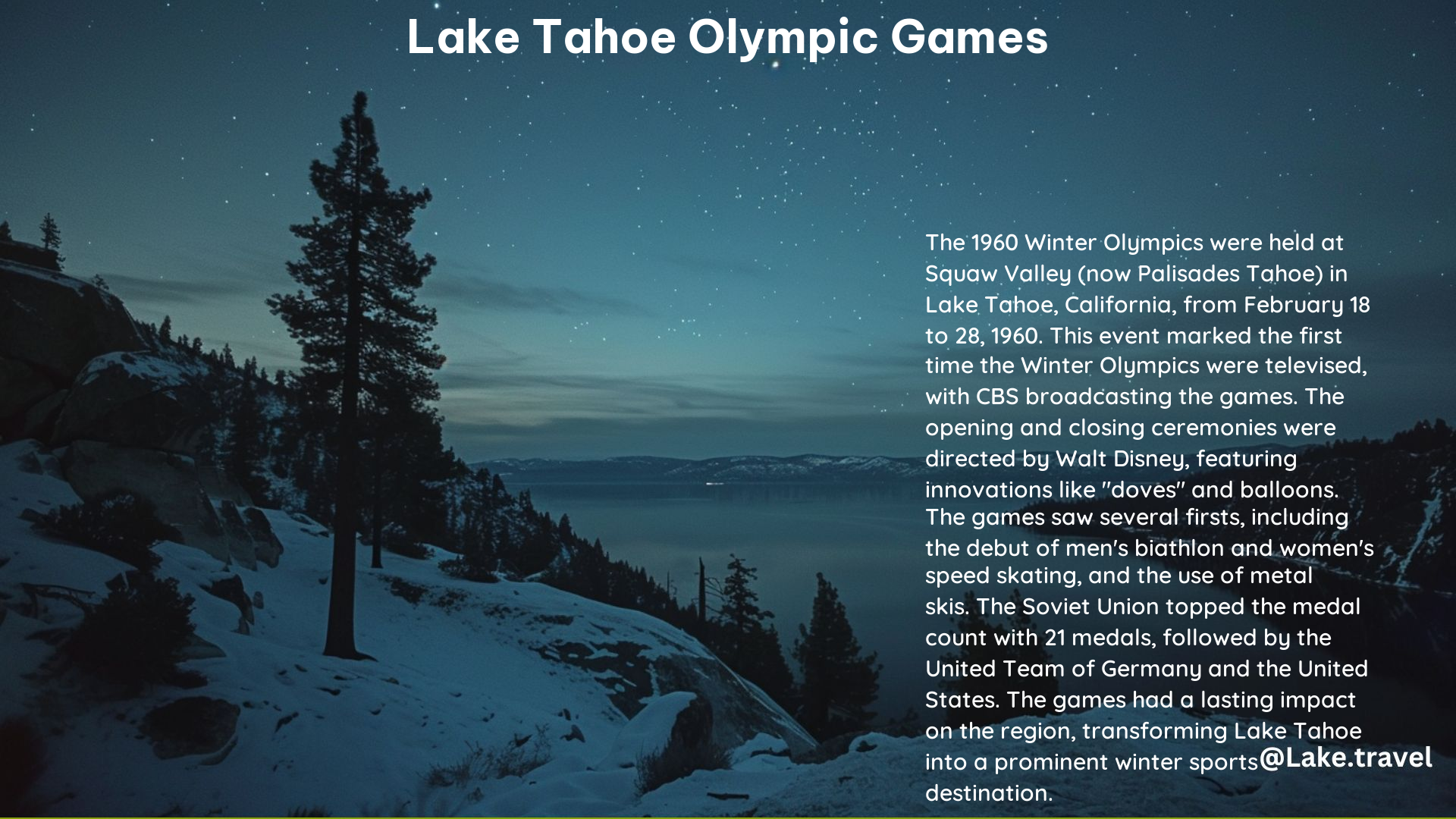The 1960 Winter Olympics, held in Squaw Valley (now known as Palisades Tahoe), had a profound impact on Lake Tahoe’s development and reputation as a premier winter sports destination. From infrastructure improvements to global recognition, the Lake Tahoe Olympic Games left an indelible mark on the region.
Infrastructure Development
The Lake Tahoe Olympic Games led to significant infrastructure development in the area, transforming it into a modern winter sports hub.
- Roads and Bridges: New roads and bridges were constructed to improve access and transportation for athletes and spectators.
- Accommodations: Hotels, restaurants, and other hospitality facilities were built to cater to the influx of visitors.
- Event Arenas: Specialized event venues, such as the Olympic Ice Arena and the Olympic Ski Jump, were constructed to host the various winter sports competitions.
Ski Resort Growth

The Lake Tahoe Olympic Games were a catalyst for the growth and expansion of the region’s ski resorts.
- Palisades Tahoe: Formerly known as Squaw Valley, this resort expanded its facilities, adding new ski lifts and snowplay areas to accommodate the increased demand.
- Heavenly Mountain Resort: This resort also introduced new activities, such as tubing, ziplining, and roller coasters, to diversify its offerings.
Tourism and Economic Boost
The Lake Tahoe Olympic Games brought international attention to the region, leading to a significant increase in tourism and a boost to the local economy.
- Increased Visitation: The global exposure of the Games attracted more visitors to Lake Tahoe, leading to a surge in tourism.
- Economic Growth: The influx of visitors and the development of new infrastructure and facilities contributed to the region’s economic growth.
- Residential and Hospitality Expansion: The increased demand for accommodations led to the construction of more homes and hotels in the area.
Global Recognition and Innovations
The Lake Tahoe Olympic Games left a lasting impact on the region’s global reputation and introduced several innovations to the world of winter sports.
- Televised Event: The 1960 Winter Olympics were the first to be televised, with CBS broadcasting the event to a global audience.
- Biathlon and Speed Skating: The Games featured the introduction of men’s biathlon and women’s speed skating as new Olympic events.
- Instant Replay: The 1960 Olympics were the first to use instant replay in sports broadcasting, a technology that has since become a staple in sports coverage.
Legacy and Lasting Impact
The Lake Tahoe Olympic Games have left a lasting legacy on the region, with various landmarks and community engagement initiatives.
- Olympic Museum: The Olympic Museum at Palisades Tahoe serves as a tribute to the 1960 Games, offering visitors a chance to relive the history of the event.
- Community Engagement: The Olympics brought the local community together, creating a sense of pride and ownership among residents.
- Environmental Awareness: The Games also raised awareness about environmental concerns in the region, leading to the creation of the Tahoe Regional Planning Agency, which focuses on sustainable development.
The 1960 Lake Tahoe Olympic Games had a profound and lasting impact on the region, transforming it into a world-class winter sports destination. From infrastructure development to global recognition, the event left an indelible mark on Lake Tahoe’s history and continues to shape its future.
References:
– https://www.redwolfolympicvalley.com/olympic-valley-history/
– https://olympics.com/en/olympic-games/squaw-valley-1960
– https://en.wikipedia.org/wiki/1960_Winter_Olympics
– https://www.kqed.org/news/11904328/the-world-was-shocked-how-the-winter-olympics-came-to-tahoe-in-1960
– https://www.sfchronicle.com/projects/2022/visuals/winter-olympics-tahoe-1960/
